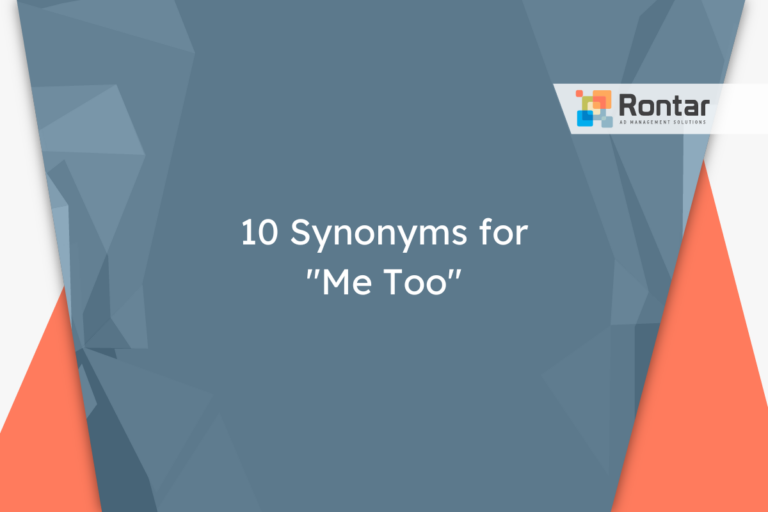10 Professional Ways to Say “Okay” in an Email

In professional emails, it’s important to choose your words carefully to convey the right tone. Simply saying “okay” might not always fit the bill, especially in more formal settings.
This article lists 10 professional alternatives to “okay” that you can use in workplace emails. Each option is explained to help you pick the right phrase for different situations and audiences.
Is It Professional to Say “Okay”?
The word “okay” can be seen as both informal and polite. In a more relaxed business environment or when communicating with someone you have established a comfortable rapport with, saying “okay” is perfectly acceptable. It straightforwardly conveys your agreement or acknowledgment. However, in formal situations or when addressing higher management, more formal phrases might be more appropriate to maintain a professional tone.
The use of “okay” is best reserved for emails or messages within teams who are used to casual communication or when responding to colleagues you’re familiar with. It is also suitable for less formal digital communication channels such as internal messengers or emails where brevity is valued.
Here’s an example:
Hi Tom,
I’ve reviewed the report you sent over. Okay, I’ll make the necessary revisions and have it back to you by end of day.
Best,
Sarah
Pros:
- Conveys agreement or acknowledgment quickly and efficiently.
- Suitable for informal or internal communications.
- Helps maintain a friendly tone in the conversation.
Cons:
- Can be perceived as too casual or informal in certain professional settings.
- May not convey the right level of professionalism when communicating with senior management or new clients.
- Lacks specificity which can sometimes lead to misunderstanding regarding the level of agreement or the type of action agreed upon.
While “okay” is commonly used and widely understood, someone might consider using an alternative phrase to better suit the formality of the situation or to add clarity.
10 Other Ways to Say “Okay” in an Email
When you want to keep your email professional but not overly formal, consider these ten alternatives to “okay”.
- Understood
- Agreed
- Will do
- Certainly
- Acknowledged
- Sounds good
- Noted
- Yes
- Consider it done
- Confirmed
1. Understood
“Understood” is a professional and polite alternative to “okay” that conveys you have completely grasped the content of the message. This phrase is especially useful when you want to emphasize that you have not only acknowledged the information but also comprehended it fully. It’s slightly more formal than “okay” and brings a sense of seriousness and attention to detail.
This alternative is best used with colleagues or supervisors in email communications when you’re responding to instructions or important information. It shows respect and diligence in professional settings.
Email example:
Hi Rebecca,
Thank you for the detailed briefing. Understood, I will proceed as discussed.
Best,
Ethan
2. Agreed
Using “Agreed” is another polite and professional way to express concurrence with a proposal or plan. It indicates a mutual understanding or acceptance of terms and is often used in discussions involving decision-making. Compared to “okay”, “Agreed” carries a stronger commitment and is suited for situations where formal agreement is necessary.
This phrase fits well when communicating with team members or partners via email, especially after making decisions or plans that require consensus.
Email example:
Hey Marcus,
We’ve reviewed the project timeline and the resources required. Agreed, let’s kick off the project as scheduled.
Best regards,
Olivia
3. Will do
“Will do” is a concise, informal alternative that signals your intention to act on a request or instruction. It’s slightly more casual than “okay” but remains polite and professional in a workplace setting. This phrase is most effective in conveying a proactive attitude and readiness.
It’s perfectly suited for quick exchanges with colleagues or superiors in emails, particularly when acknowledging tasks or action items.
Email example:
Hello Jenna,
Thanks for reminding me about the report update. Will do by this afternoon.
Cheers,
Liam
4. Certainly
“Certainly” is a polite and reassuring alternative that suggests a high level of agreement and willingness. This word carries a more formal tone than “okay”, making it suitable for professional correspondence. It’s great for expressing eagerness or confirming arrangements in a positive manner.
This alternative works well in both emails and verbal communication, especially with clients, higher management, or any professional contact.
Email example:
Dear Clara,
I received your request for the additional data. Certainly, I will compile it and send it over by tomorrow.
Kind regards,
Derek
5. Acknowledged
“Acknowledged” is a formal and professional term that is used to confirm receipt and understanding of a message. It is more formal compared to “okay” and explicitly indicates that the message has been received and noted. This alternative is particularly effective for communications that require a formal acknowledgement or for when you want to demonstrate attentiveness without the need for further action.
Best suited for emails with colleagues or management where confirming receipt of instructions or important information is necessary.
Email example:
Hi Theo,
Your instructions for the project update have been received. Acknowledged, and I’ll ensure they are followed precisely.
Regards,
Sophie
6. Sounds good
“Sounds good” is among the more informal but still professional and polite ways to convey agreement or approval. It’s best used when you agree with a suggestion or plan, typically in a less formal conversation. This term adds a positive and agreeable tone to your response.
This phrase is great for emails between team members or with clients you have a more relaxed relationship with, signaling agreement in a friendly manner.
Email example:
Hi Kevin,
Let's set the meeting for 10 AM on Thursday. Sounds good?
Best,
Rachel
7. Noted
“Noted” is a succinct and formal alternative that implies you have received and will remember the information given. This one-word response is highly professional and polite, suitable for acknowledging receipt of information without needing immediate action. It demonstrates responsibility and attentiveness.
Use this alternative in professional emails when you want to quickly show that you have taken note of the information or instructions provided by colleagues, supervisors, or clients.
Email example:
Dear Kyle,
Thank you for updating me on the deadline change. Noted.
Sincerely,
Anna
8. Yes
“Yes” is a formal and polite alternative to “okay” that is clear and unequivocal. It is straightforward and leaves no room for doubt about agreement or consent. Compared to “okay”, it may come across as more direct and confident, making it preferable in professional settings where clarity is paramount.
This response is best used with any type of correspondent, whether colleagues, clients, or supervisors, especially in emails where a clear affirmation is required.
Email example:
Hello Patricia,
Will we proceed with the plan we discussed? Yes, let’s move forward with it as agreed.
Best,
George
9. Consider it done
“Consider it done” is an enthusiastic and informal but still professional way to indicate that you not only agree to take on a task but also imply confidence in its successful completion. This alternative to “okay” adds a layer of commitment and reassurance, making it a great choice for tasks or projects.
It’s a terrific option for emails within your team or with peers when you want to convey competence and reliability in a friendly tone.
Email example:
Hey Alex,
Could you handle the client follow-up emails? Consider it done.
Cheers,
Jordan
10. Confirmed
“Confirmed” is a formal and professional alternative that explicitly communicates your agreement or the affirmation of plans or details. It’s more specific than “okay”, indicating a finalized decision or acknowledgment. This term is useful for clear communications, leaving no ambiguity about consent or plans.
This synonym is advisable for email correspondence across all levels of business, particularly when confirming appointments, meetings, or decisions made during previous discussions.
Email example:
Hi Lisa,
The appointment time for next Wednesday at 3 PM is now Confirmed.
Best wishes,
Ted
Final Thoughts
Choosing the right way to say “okay” in an email can change how professional and attentive you appear. The ten alternatives we’ve shared offer a range of options, from formal to more relaxed, ensuring you can adapt your communication style to suit any situation or recipient. Trying out these different phrases can not only make your emails more effective but also demonstrate your ability to communicate thoughtfully in a professional environment.






